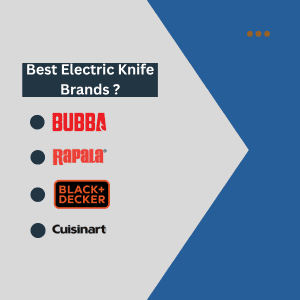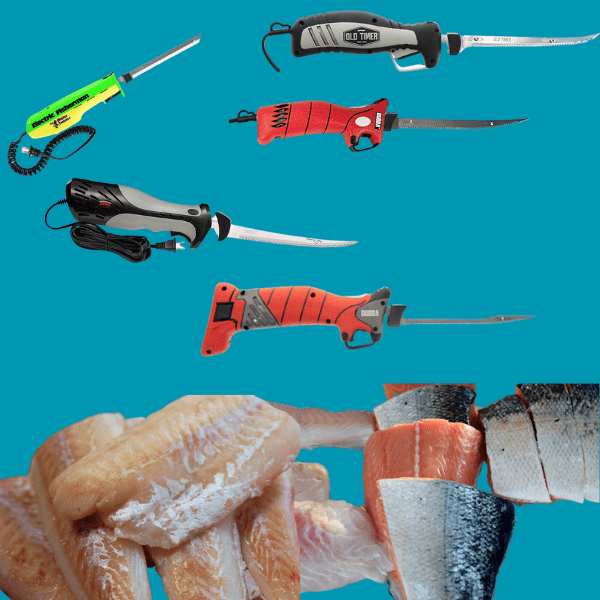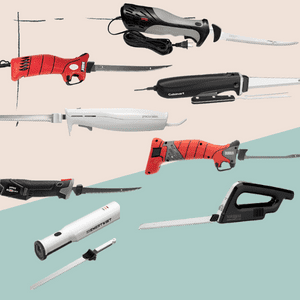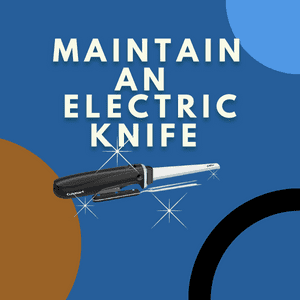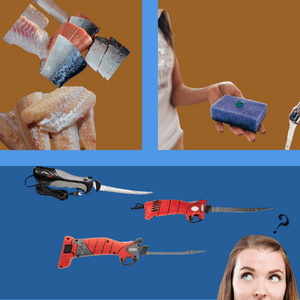Are you struggling to cut through tough meats or bread with your electric knife? Is it not working as efficiently as it used to? The most likely cause is that your knife has become dull over time. Fortunately, you can sharpen an electric knife easily with the right tools and technique.
Before we get into it, you must understand that most electric knives, including electric fillet knives and carving knives, have serrated blades. Interested in learning more about electric knives? Our Ultimate Guide has got you covered with everything you need to know.
To sharpen an electric knife is almost the same as sharpening a serrated blade. It can be daunting for some, but it can be straightforward with the right tools and techniques. Serrated blades are unique in their design and require a different approach to sharpening than straight blades. In this article, we will provide you with a step-by-step guide on how to sharpen a serrated blade and tips on maintaining its sharpness over time.
Understanding Serrated Blades
Before we dive into the sharpening process, let’s first understand the design of serrated blades. Serrated blades have a saw-like edge that cuts through rigid materials like bread, meat, and rope. The serrations along the blade’s edge create small pockets that grip and hold onto the cut material, resulting in a cleaner and more efficient cut.
Serrated blades come in different sizes and shapes, most commonly wavy or scalloped edges. The number of serrations on the blade can vary; some have just a few, while others may have dozens. Regardless of the number of serrations, the principle of sharpening remains the
Tools and Materials
Before starting the sharpening process, gathering the right tools and materials is crucial. You will need the following:
- A serrated blade sharpener
- A honing rod
- A honing oil (optional)
- A clean cloth
- A pair of gloves (optional)
Step-by-Step Guide
Sharpening a serrated blade may seem complicated, but it’s pretty simple once you understand the process. Follow these steps to sharpen your serrated blade:
Secure the blade: Before sharpening, ensure the blade is secure and won’t move during the process. You can clamp it in a vise or hold it with gloves.
Apply honing oil (optional): If using honing oil, apply a small amount to the honing rod. This will help lubricate the blade and protect it from damage during the sharpening process.
Run the sharpener along the blade: Place the sharpener onto the first serration, and run it along the blade with light pressure. Make sure to sharpen both sides of each serration to ensure a clean cut. Repeat this process for each serration along the blade.
Use a honing rod: After using the sharpener, use the honing rod to realign and smooth the serrations. Place the honing rod into the first serration and run it along the blade. Repeat this process for each serration.
Clean the blade: Once you have completed the sharpening process, use a clean cloth to wipe down the blade and remove any residual oil or debris.
Sharpen an electric knife maintenance
Sharpening an electric knife is a simple process. Still, it’s vital when it comes to maintaining an electric knife’s sharpness to ensure it continues to perform at its best. Here are a few tips on how to keep the sharpness of your serrated blade:
- Use the right cutting board: Using the right cutting board can significantly impact the sharpness of your blade. A soft cutting board, such as bamboo or plastic, can dull the edge quickly, so it’s best to use a rigid cutting board made of wood or composite materials.
- Store the blade properly: Storing it properly can also impact its sharpness. Store it in a safe place that won’t be damaged or knocked against other objects. Consider using a knife block or a magnetic strip for secure storage.
- Avoid using the blade for rigid materials: Serrated blades are designed for tough materials, but overuse can lead to dulling. Avoid using the knife for tasks such as opening cans or cutting hard materials like bones.
- Regular sharpening: Regular sharpening is the best way to maintain the sharpness of your serrated blade. How often you sharpen will depend on how frequently you use the blade, but it’s a good idea to sharpen at least once every six months to ensure it remains sharp.
Conclusion
Sharpening a serrated blade may seem intimidating, but it can be a simple and straightforward process with the right tools and techniques. Following the steps outlined in this guide, you can sharpen your serrated blade and maintain its sharpness for optimal performance. Remember always to take care when handling sharp edges, and if you need clarification on the sharpening process, consider seeking the assistance of a professional.
